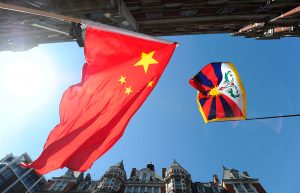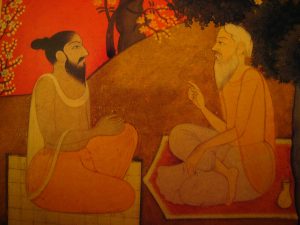As reporters and health officials walked onto the grounds of the mass suicide in Guayana, they were in shock over what they were seeing; hundreds of bodies face down on the ground, dead. One person who was at the site said that the amount of dead bodies was appalling, “it was depicted as not American, not religious, not sane, and ultimately not human.”1 Over 550 bodies of the 900 were unclaimed for almost six months until US Officials decided to cremate them. Once they brought the bodies back to the United States from Guayana, many Americans didn’t think it was right to have these bodies spread out on American soil because of the act they made. US Officials then decided to scatter the ashes of the dead bodies away from the United States border lines.

It all started with Jim Jones. Jones was a religious/political cult leader who had established the People’s Temple as a sect in Indianapolis in the 1950s. His cult focused on themes of communism, and the fight against racism, attracting many African Americans. He moved his cult to San Francisco in 1971, but it would not remain there for long. Soon after the group moved there, Jones was accused of financial fraud, physical abuse of his cult’s members, and mistreatment of children. After Jones was accused, in 1973, he became paranoid that someone would try to destroy his cult, so he moved his entire group to Guayana, South America, to build a socialist utopia known as Jonestown.

Once the cult moved to Guayana, people started to question even more the accusations being made against Jim Jones. Members who had left or escaped the cult were worried for the people still in the cult, so they convinced U.S. Congressmen Leo Ryan of California to fly to Guyana. “In November 1978, Ryan along with a group of journalists and relatives of cult members went to investigate the charges.”2 Jones did not like the idea of people coming to investigate, so he ordered his followers to have Ryan and his investigators assassinated. He ordered the attack on the group as they were returning to the airstrip to leave. A journalist named Charles Krause reported that that morning Ryan was attacked by a man with a knife, although he was not hurt by the incident. “Later that same day, Ryan and his party were attacked by assassins at the Port Kaituma Airstrip. Ryan and four others were killed and ten were injured.”3 While these killings were going on, Jones feared that he would lose his cult members and they would turn against him. He then proceeded to lead his people through a mass suicide, which was something the members had repeatedly practiced since the early 1970s.
These practices were called “White Nights” and consisted of members drinking a liquid that they believed was poisonous as a loyalty test to Jones.4 During these “White Nights,” people were woken up by a loud speaker, and they would assemble for the ritual of passing around a drink of kool-aid, which they were told was poison. Unfortunately, this time was not a test. Hundreds of adults and children lined up to drink this colorful, fruit-flavored punch, which contained cyanide and tranquilizers. Most of them thought they were just proving their loyalty as before, but as more people began to die, they realized that this time it was real. “Over 260 children, for example, had the poison given to them, while only about 40 adults escaped.”5 For those who died willingly though, collective suicide held a religious significance in the context of the worldview that had been established in Jonestown.

Collective suicide was a ritual that signified a purity of commitment to the community. On the night that they all drank this poison, Jim Jones announced “that the members of the community were united as black, proud socialists.”6 Collective suicide also promised release from a world dominated by what Jones perceived as American racism, capitalism, and fascism. He did not want to be captured and taken back to America, so instead he urged his followers to drink the poison, and “step out of the world.”7 Jones had told his followers that they were not committing suicide, but rather they were performing an act of freeing themselves from the harsh world that they lived in. There are later reports that when officials went to Jonestown, Jim Jones was found with gunshot wounds, raising the speculation that either he had committed suicide or someone else had killed him.
The Jonestown Massacre was the largest mass suicide in modern history and resulted in the largest single loss of American civilian life in a non-natural disaster until the September 11 attack in 2001. The mass suicide resulted in over 900 deaths of innocent lives. Once the bodies were found, the Guyanese government asked the United States to take the bodies back. US Officials decided to start sending a few people over to identify bodies so they could decide what to do with them. Over 500 bodies were unclaimed and that is when the United States decided to have the US Air Force come in to take the bodies back to the United States.”8 To this day, families of loved ones are still trying to find a memorial place for the lost lives.
- Encyclopedia of Religion, 2005, s.v. “Jonestown and Peoples Temple,” by David Chidester. ↵
- Dictionary of American History, 2003, s.v. “Jonestown Massacre,” by Carolyn Bronstein. ↵
- Dictionary of American History, 2003, s.v. “Jonestown Massacre,” by Carolyn Bronstein. ↵
- Dictionary of American History, 2003, s.v. “Jonestown Massacre,” by Carolyn Bronstein. ↵
- Encyclopdeia of Religion, 2005, s.v. “Jonestown and Peoples Temple,” by David Chidester. ↵
- Encyclopdeia of Religion, 2005, s.v. “Jonestown and Peoples Temple,” by David Chidester. ↵
- Encyclopdeia of Religion, 2005, s.v. “Jonestown and Peoples Temple,” by David Chidester. ↵
- Encyclopdeia of Religion, 2005, s.v. “Jonestown and Peoples Temple,” by David Chidester. ↵



150 comments
Mason Meza
I never knew about this cult. To me People who lead cults are absolutely disgusting because they take someone and completely change their belief. In this case Jim Jones took many people and had them all sacrifice their lives for himself. This article did a very good job of explaining what Jim Jones did to all of those poor people in Guyana.
Hailey Rodriguez
Before reading this article I had never heard of this story before. I did not know that a cult like this existed and especially with this type of leader. I think it is crazy that he was scared for himself and made his followers kill themselves in order to save himself. The number of people who died during this mass suicide is crazy. Their children were involved too, which I think is heartbreaking. This article was very informative about a matter I had never heard about before.
Lamont Traylor
I find it so crazy how people can follow certain cult leaders and do the things that they do. It seems ridiculous to me that someone can have that type of influence over what I assume would be smart adults. Jim jones was responsible for hundreds of deaths and he even made his own community where people lived and followed him as if he was a messenger of god.
Aneesa Zubair
It’s both intriguing and shocking to learn how one person can manipulate a entire town to kill others, and then themselves, in order to prove their loyalty. The pictures left a huge impact on me as I hadn’t seen pictures of the dead bodies of Jonestown before. Also, I didn’t know that the members of the cult weren’t aware the Kool-Aid had poison in it before they drank it. Overall, this article was very informative. Great job!
Dylan Sanchez
Such an interesting yet sad article to read. This article was very well structured and kept you wanting more. Never did I feel bored of this. This goes to show how such an insane individual can rile up a group of people to be his followers even to death, charisma truly does take you miles. I also enjoyed that the article purely did not focus on Jamestown but much of the background information on Jones, himself, and the ritual he made his people partake in.
Noah Bolhuis
This is the first time I had heard of this mass suicide, and it is quite scary. The thought that one man has enough influence of his followers to leave America and their comforts, and offer to sacrifice their life for him. I also don’t think this was mass suicide because most of these people didn’t think it was for real, but another test. It could have been considered a mass murder done by Jim Jones and his other leads of the cult.
Jabnel Ibarra
A charismatic leader is often the unmistakable mark of a cult. It’s saddening to see what were likely once normal people be swayed to such extreme actions just because a single man knew exactly what words to use and how to use them to convince people to do what he wanted. I will never understand the thought process that Jim Jones went through in manipulating so many people the way he did, and forcing children to poison themselves so he can avoid going to prison is appalling and despicable
Janelle Larios
I vaguely learned about this incident in my AP Psychology class in high school. I was so surprised to read about this again because I had totally forgotten about this. One thing that always got me was that hundreds of people moved out of the US to follow Jones and to be apart of this cult. I could never wrap my brain around that and I could never understand why they would participate in these “White Nights” where they didn’t ever know if they were going to live or not, just to prove their loyalty. It’s just a very crazy situation.
Sabrina Hsu
I had heard the name Jonestown before but I never knew what it was or anything about it. It’s unbelievably sad what Jim Jones did to all those people. It’s almost as if they were all brainwashed, I don’t understand how they wouldn’t say something or run away knowing he wanted them to do something like that. The saddest part is that families to this day don’t have a memorial to mourn their lost loved ones.
Eric Ortega Rodriguez
Wow, this article is very informative, especially because I had no knowledge of The Jonestown Massacre. It is remarkable to see to what extent the people of Guyana would take their beliefs to. Jim Jones is just one of many to use the power of the tongue for malicious purposes. It is sad to see individuals that are incredibly gifted in their communication skills use them for evil which extends way before this massacre to even today. The people of Guyana believed what they were doing was for the best and were willing to sacrifice themselves to prove their loyalty to the “greater good.”